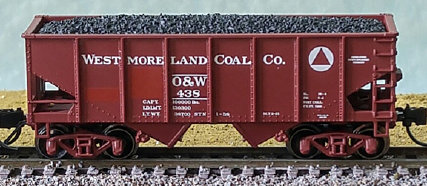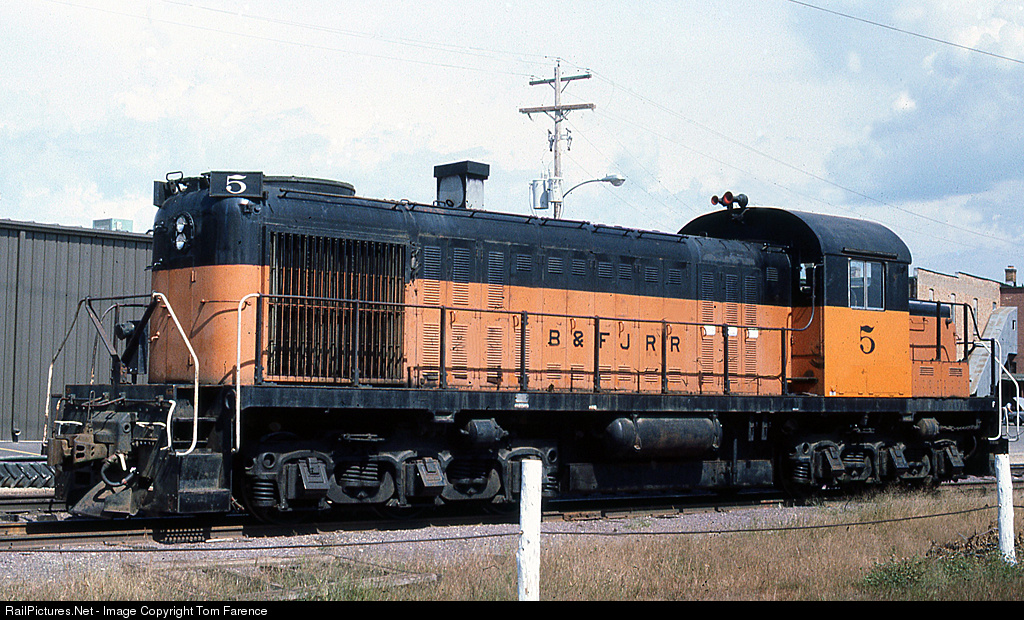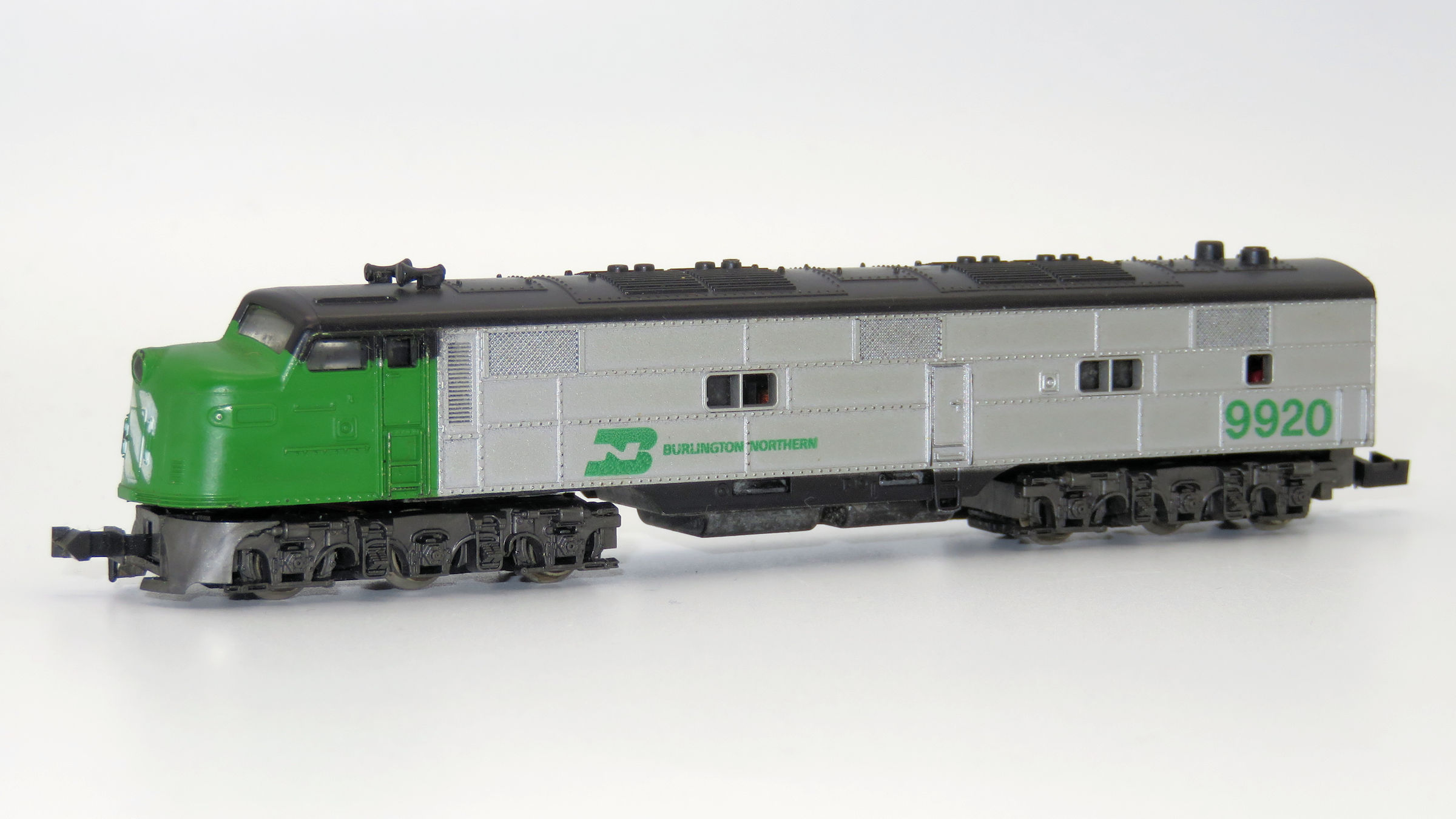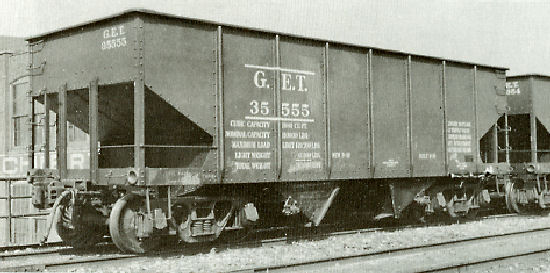Specific Item Information: Charleston & Western Carolina had at least 360 of these hoppers which appeared to have mostly been used to haul stone. C&WC was born from an 1896 merger creating a 341 mile route from the Atlantic port of Port Royal, South Carolina (between Savannah and Charleston) to cities in the northwest corner of the state. The line ran along the Georgia border, crossing it to reach Augusta, then back into South Carolina to fan out and reach Anderson, Greenville and Spartanburg. Their connection in Spartanburg with sister road Clinchfield and Clinchfield’s connection with C&O created an important through route from the Industrial Midwest (particularly Ohio, Indiana and Michigan) to the ports of South Carolina. Atlantic Coast Line held stock control of the C&WC since 1897 but it remained a separate operation until it was finally absorbed by ACL in 1959. We will be including “stone” loads on this run in place of the usual “coal” loads.
Model Information: These ready-to-run cars feature: die cast slope sheet-hopper bay-center sill assembly; injection molded plastic sides, ends, and hopper doors; fully molded brake tank, valve and air lines; body mounted brake hose detail; coal load; lever-style hand brake; body mounted magnetically operating knuckle couplers; close coupling; and Fox Valley Models metal wheels.
Prototype History: The USRA 55-Ton hopper was designed by the United States Railway Administration during World War I as a standardized hopper to be used by all railroads in order to aid the war effort. After WWI many railroads continued to use the USRA 55-Ton hoppers, as well as build many thousands more clones. The USRA hopper was in use on North American railroads from 1918 until the 1970’s
Road Name History: 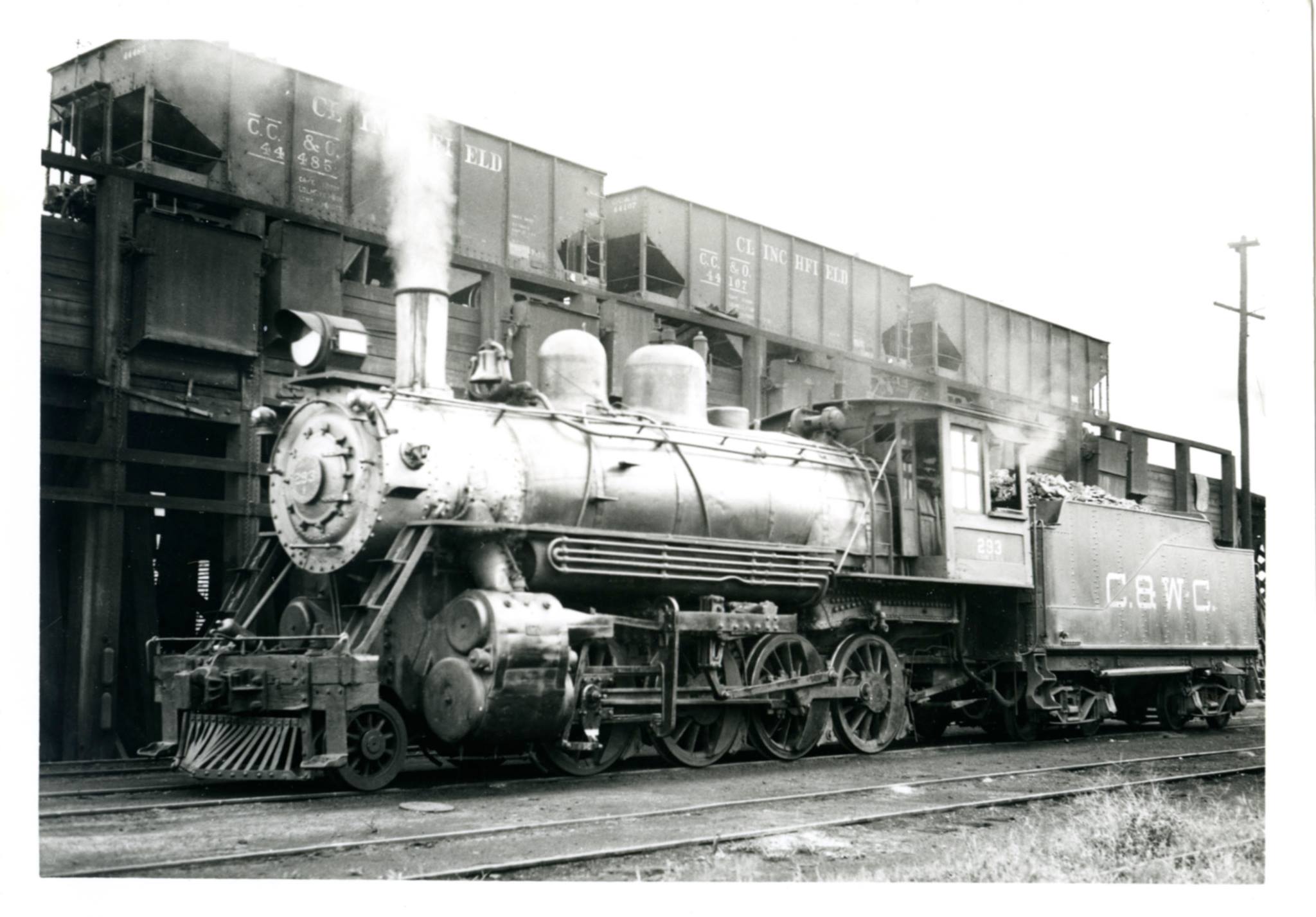 C&WC was born from an 1896 merger, creating a 341 mile route from the Atlantic port of Port Royal, South Carolina (between Savannah and Charleston) to cities in the northwest corner of the state. The line ran along the Georgia border, crossing it to reach Augusta, then back into South Carolina to fan out and reach Anderson, Greenville and Spartanburg. Their connection in Spartanburg with sister road Clinchfield and Clinchfield’s connection with Chesapeake & Ohio created an important through route from the Industrial Midwest (particularly Ohio, Indiana and Michigan) to the ports of South Carolina. Atlantic Coast Line held stock control of the C&WC since 1897 (and C&WC shared ACL's purple and silver diesel paint scheme) but it remained a separate operation until it was finally absorbed by ACL in 1959.
C&WC was born from an 1896 merger, creating a 341 mile route from the Atlantic port of Port Royal, South Carolina (between Savannah and Charleston) to cities in the northwest corner of the state. The line ran along the Georgia border, crossing it to reach Augusta, then back into South Carolina to fan out and reach Anderson, Greenville and Spartanburg. Their connection in Spartanburg with sister road Clinchfield and Clinchfield’s connection with Chesapeake & Ohio created an important through route from the Industrial Midwest (particularly Ohio, Indiana and Michigan) to the ports of South Carolina. Atlantic Coast Line held stock control of the C&WC since 1897 (and C&WC shared ACL's purple and silver diesel paint scheme) but it remained a separate operation until it was finally absorbed by ACL in 1959.

Brand/Importer Information: Bluford Shops began in 2007 as a side project of two model railroad industry veterans, Craig Ross and Steve Rodgers. They saw a gap between road names available on N scale locomotives but not available on cabooses. They commissioned special runs of Atlas cabooses in Atlantic Coast Line, Central of Georgia, Monon, Boston & Maine and Southern plus runs on Grand Trunk Western and Central Vermont on the MDC wooden cabooses. While these were in process, they began to develop their first all new tooling project, 86' Auto Parts Boxcars in double door and quad door editions in N scale. By January of 2008, Bluford Shops became a full time venture. Along with additional N scale freight cars and their own tooling for new cabooses, they have brought their own caboose line to HO scale. They also have their popular Cornfields in both HO and N. The future looks bright as they continue to develop new products for your railroad.
The town of Bluford in southern Illinois featured a small yard on Illinois Central's Edgewood Cutoff (currently part of CN.) The yard included a roundhouse, concrete coaling tower (which still stands) and large ice house. Reefer trains running between the Gulf Coast and Chicago were re-iced in Bluford. Things are more quiet now in Bluford with the remaining tracks in the yard used to stage hoppers for mines to the south and store covered hoppers. Intersecting the IC line in Bluford is Southern Railway's (currently NS) line between Louisville and St. Louis. Traffic on this single track line remains relatively heavy.
The town of Bluford in southern Illinois featured a small yard on Illinois Central's Edgewood Cutoff (currently part of CN.) The yard included a roundhouse, concrete coaling tower (which still stands) and large ice house. Reefer trains running between the Gulf Coast and Chicago were re-iced in Bluford. Things are more quiet now in Bluford with the remaining tracks in the yard used to stage hoppers for mines to the south and store covered hoppers. Intersecting the IC line in Bluford is Southern Railway's (currently NS) line between Louisville and St. Louis. Traffic on this single track line remains relatively heavy.
Item created by: gdm on 2016-10-13 19:41:48
If you see errors or missing data in this entry, please feel free to log in and edit it. Anyone with a Gmail account can log in instantly.
If you see errors or missing data in this entry, please feel free to log in and edit it. Anyone with a Gmail account can log in instantly.


